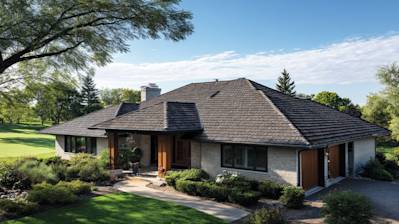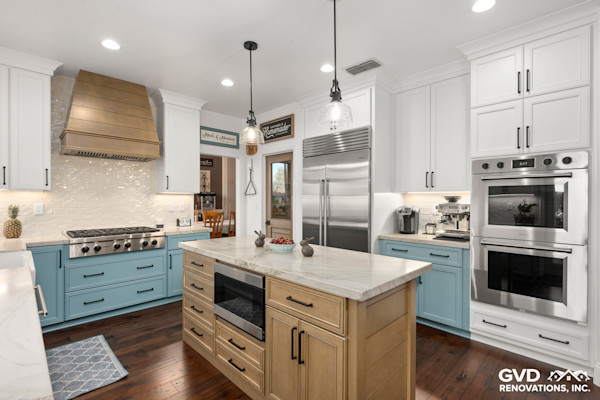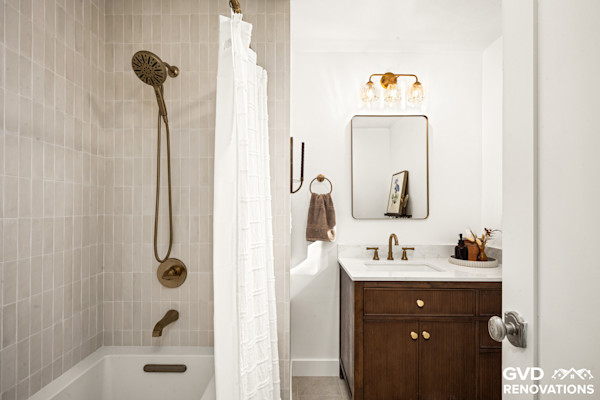Roof vents serve as vital components within the structural design of any building. Most people are familiar with pitched roof vents, but today our focus will be on a less common but equally effective solution: flat roof vents. Given the unique benefits and installation processes, this article aims to provide a detailed understanding of flat roof vents in a simplified manner.
Flat Roof Vents: Why Are They Important?
The primary function of a roof vent is to maintain a stable temperature within your property, thereby contributing to a pleasant environment for the inhabitants. Flat roof vents are no exception. They facilitate proper air circulation which prevents the accumulation of damp, stagnant air that could lead to mold growth.
Temperatures Aesthetics
Flat roof vents help in the dissipation of trapped heat during the summer months. This way, they help reduce the workload on your air conditioning system, leading to energy efficiency and cost-saving benefits. In the winter months, these vents can prevent the formation of ice dams by maintaining an even roof temperature.
Structural Longevity.
By preventing the buildup of moisture, flat roof vents aid in prolonging the lifespan of a home's structural components. The constant circulation of fresh air keeps damaging elements at bay, thereby promoting the longevity of the building materials.
The Different Types of Flat Roof Vents
Knowing the types of flat roof vents is crucial in making an informed choice. Each type has a different application method, and understanding them will guide you in making the perfect choice for your flat roof.
Static Vents
Static vents, also known as box vents, are the most common type of roof vents. They have no mechanical elements, instead, they rely on naturally occurring wind and heat imbalance for the extraction of stale air.
Turbine Vents
Turbine vents are an economical and effective way of increasing the ventilation of your flat roof. The spinning action of the blades draws out warm air from the inside, thereby maintaining a regular flow of fresh air.
Power Vents
Power vents are electronically driven and are excellent in maintaining air circulation within larger spaces. While they require the most installation effort, the results are worth the input.
Understanding Flat Roof Vent Installation
Correct installation of a flat roof vent requires close attention to detail, ensuring aligning the vent with the pitch of the roof and properly sealing it to prevent water intrusion. Working with a professional roofing contractor in Sacramento will guarantee the optimal positioning of these vents.
Factors to Consider for Installation
Before embarking on the journey of installing flat roof vents, there are a few factors to consider:
- Property size: The size of your property determines the number and type of vents required for effective operation.
- Local climate: The choice of a vent type highly depends on the local climate conditions. For instance, areas prone to high winds would be better served with static vents.
- Roof design: it's all about compatibility and aesthetics. Choose a vent design that seamlessly blends with your roof.
Flat Roof Vent Maintenance
Maintaining flat roof vents is crucial for their optimal operation. Regular cleaning and inspection will ensure the vents remain in good shape, ultimately prolonging their lifespan.
Here is a quick checklist for maintaining flat roof vents:
- Regularly check for any debris or blockages.
- Inspect for any signs of rust or wear and tear.
- Make timely replacements when necessary.
Frequently Asked Questions about Flat Roof Vents
Can I Install Flat Roof Vents Myself?
While it is technically possible for homeowners to install flat roof vents on their own, it isn't typically recommended. Installing a roof vent is a challenging job that requires specific skills and knowledge. It would be best to hire a professional to ensure a proper installation and to avoid any future problems that may occur due to improper installation.
What Types of Flat Roof Vents are there?
There are various types of flat roof vents available, each with specific features and advantages. These include the mechanically powered vents, passive vents, and static vents. There are also turbine vents, which are a type of passive vent, and they function best in regions with high winds.
How Are Flat Roof Vents Cleaned?
The process of cleaning flat roof vents involves removing the vent cover using a screwdriver or a similar tool. Then, using a brush or a vacuum cleaner, you can remove dust and debris from the vent. After cleaning, restore the cover back into its place. However, these steps may differ depending on the type of vent you have, hence consulting a professional or your vent guide is a good idea.
How Many Flat Roof Vents Do I Need?
The number of flat roof vents you need depends on various factors such as the size of your attic or space, the type of vent you're using, and the climate in your location. Generally, one square foot of vent area is needed for every 300 square feet of attic space when the attic has a vapor barrier. Without a vapor barrier, the requirement increases to 1 square foot of venting for every 150 square feet of attic space.
When Should I Replace My Flat Roof Vent?
Flat roof vents generally last for years, but they may need to be replaced if they get damaged due to harsh weather or if debris gets trapped inside them. Regular maintenance can help in increasing the lifespan of the vent. However, if your vents are older than around 15-20 years, it's a good idea to consider a replacement.
Are Flat Roof Vents Energy Efficient?
Yes, flat roof vents can contribute to energy efficiency. By providing natural ventilation, these vents help in reducing the need for mechanical cooling in hotter months, which can save on energy costs. Plus, in colder seasons, roof vents help decrease the risk of ice damming.
Can Flat Roof Vents Help with Moisture Control?
Absolutely! One of their main functions is moisture control. Flat roof vents allow for effective ventilation, which in turn reduces the buildup of moisture, thereby preventing problems like mold growth, dampness, rot, and other similar issues.
Pros of Flat Roof Vents
Healthy Ventilation
Certain aspects of maintaining a building, such as maintaining a healthy ventilation system, are made simpler with flat roof vents. Flat roof vents assist in air circulation, keeping the temperature of the room constant. By preventing the buildup of hot and humid air in the attic, they help to reduce the chance of undue moisture causing mold and mildew damage.
Energy Efficiency
One of flat roof vents' key benefits is energy efficiency. They amortize their installation expenditure over time by reducing your energy usage and therefore your utility bills. Open systems assist to avoid a buildup of hot air in the structure during the summer months, which helps you save on cooling costs. They can also reduce the load on your home’s heating system during the winter.
Aesthetics
Flat roof vents seamlessly blend with the roof, adding to the aesthetics of the house. Unlike other traditional roof vents, these vents are not bulky and can be painted to match the color of the roof, making them less noticeable.
Durability
Flat roof vents are durable and rarely need maintenance once installed. Most flat roof vents are corrosion-resistant and will function effectively for years without needing replacements.
Fire Safety
In the event of a fire, flat roof vents aid in the reduction of smoke and heat, providing safer conditions for individuals to evacuate and for firefighters to control the fire more effectively.
Cons of Flat Roof Vents
Blockage Susceptibility
Flat roof vents are more susceptible to blockages from debris like leaves, twigs, or even snow in certain climates. When blocked, they're incapable of performing their function adequately, possibly leading to a moisture build-up and reducing the overall vent's life expectancy.
Superior Alternatives Exist
Compared to ridge and soffit vents, flat roof vents often do not perform as well. Because warm air naturally rises, ridge and soffit vent systems, which take advantage of this fact, are generally efficient at moving air through a building compared to a flat roof vent system.
Potential Leak Source
Even though flat roof vents are meant to be watertight, they, just like any other roofing feature, may be potential spots for leaks. Any vent penetration in a flat roof can possibly lead to leaks if not correctly installed or maintained.
Difficulty in Installation
The installation of flat roof vents can vary in difficulty depending on the type of roof and the vent being installed. Miscalculations can quickly lead to significant problems. These vents need to be positioned appropriately to make the most of the prevailing wind, and also to stop water from entering. Amateur or DIY installations may result in leaks or less than optimal functioning.
Noise
During periods of high wind, or when a vent gets older, it may create a significant amount of noise, which can be quite bothersome. The noise can range from a slight humming to loud squeaking or rattling.
Unwanted Animal Entry
Animals such as birds, squirrels, and bugs can sometimes gain entrance into the house through flat roof vents. Screening can be added, but that also brings the potential for more maintenance requirements.
Misconceptions about Flat Roof Vents
Flat roof vents are essential for any construction with a flat rooftop. They serve the vital purpose of ensuring proper air circulation, regulating temperature within the building, and curbing moisture buildup. However, there are numerous myths and inaccurate beliefs about flat roof vents that may deter homeowners and builders from installing them or using them correctly. Let's debunk some of these common misconceptions.
Misconception 1: Flat Roof Vents aren't Necessary
Myth: Ventilation is a Luxury and not a Necessity
Some people believe that ventilation is just an added comfort, not a must-have. They view it as a way to keep the indoor air fresh and cool, but not essential for building health.
Truth: Ventilation is essential for Building Health
In reality, good ventilation helps protect the integrity of your building structure. Inadequate ventilation in flat roof structures may lead to condensation, which fosters a favorable environment for mold and mildew growth. This not only poses a health hazard but can also lead to wood rot and other structural damage, compromising the building's integrity.
Misconception 2: All Venting Systems are created equal
Myth: All Vents Serve the Same Function
A prevalent misleading idea is that all types of vents, regardless of their design differences, serve the same function. This makes most people believe that they can install any vent in their flat rooftop.
Truth: Different Vents Serve Different Purposes
This couldn't be further from the truth. The various types of vents, including soffit vents, ridge vents, gable-end vents, and wind turbines, each serve unique purposes. Depending on your flat roof's design, local setting, and specific ventilation requirement, the appropriate kind of vent should be selected.
Misconception 3: More Vents equal Better Ventilation
Myth: Having more Vents Guarantees Improved Ventilation
Some people believe that the more vents you install, the better the ventilation within the building structure. The rationale behind this myth is that multiple vents allow more air circulation.
Truth: Proper Vent Placement is Crucial
Installing more vents doesn't necessarily guarantee better ventilation. The effectiveness of rooftop vents largely depends on their strategic placement. The vents should be positioned to facilitate a continuous flow of air from the lower parts of the roof to the upper parts—often referred to as the 'stack effect.'
Misconception 4: Flat Roof Vents are a Source of Energy Loss
Myth: Vents Cause High Energy Bills
The fear of high energy bills is often a major deterrent for homeowners considering the installation of flat roof vents. The assumption is that these vents allow hot air to escape during winter, leading to increased energy consumption.
Truth: Vents Help with Energy Efficiency
Quite the contrary, flat roof vents can contribute to energy efficiency. During summer, these vents release hot air, reducing the reliance on cooling systems, and during winter, they help in minimizing the condensation levels, thus alleviating the need to heat extra moisture-laden air.
Misconception 5: Roof Vents are Unattractive
Myth: Vents Deteriorate the Rooftop's Aesthetic Appeal
The belief that vents will ruin the aesthetics of flat roofs and overall building appearance is widespread, making many refrain from installing them.
Truth: Vents can be Installed Discretely
Roof vents have come a long way and are not the eyesores they once were. With a range of modern designs available, they can be discreetly incorporated into your flat roof without compromising its aesthetic appeal.
Misconception 6: DIY Installation is Sufficient
Myth: Anyone can Install Flat Roof Vents
Many may believe that installing a vent is a simple task that anyone can perform, which may result in some risking DIY installation.
Truth: Vent Installation is best done by Professionals
Installation of flat roof vents requires a good understanding of the structure and dynamics of your building, the local environment, and roof venting systems. Mishandling the installation could lead to short-circuiting of the ventilation system, leaks, roof damage, and ineffective ventilation. Therefore, it's advisable to entrust the job to professionals.
Understanding these misconceptions about flat roof vents and their accurate illustrations can be the first step towards making informed decisions about your building’s ventilation system. Always bear in mind that the ventilation mechanisms you choose can greatly impact your property's longevity and health, and the overall comfort of the building's occupants.
Summary
So, our chat about flat roof vents wraps up here. They're a simple yet important part of our constructions. With the help of flat roof vents, the accumulated hot air, moisture, and air stagnancy troubles bid goodbye. They play a key role in maintaining the building's temperature balance, prolonging the lifespan of your roofing materials by preventing dampness and rotting.
Remember, flat roof vents come in multiple styles, too, fitting every aesthetic and functional requirement. They are made of different materials like plastic or metal, each serving its own purpose and providing a range of benefits. It's smart to mark the roofing square footage and then decide the number and placement of vents. It's also important to periodically check and maintain these vents for better functionality.
But, of course, installing these vents isn't a DIY job in most cases. So, it's best left to the experts. If you're planning on getting flat roof vents for your building, seek professional advice. They'll suggest the best type, number, and positioning of vents for your roof, taking into account factors like your location, climate, roofing material, and more. No matter what, remember their importance and the variety of benefits these small additions can bring to your building.
About GVD Renovations & Remodeling
GVD Renovations & Remodeling is a premium home remodeling company based in the beautiful city of Roseville, CA. Our expert team has an impressive and diverse background in all aspects of home renovations. We're passionate about turning homes into dream spaces. We offer top-notch services ranging from kitchen and bathroom remodeling, window installations, and siding services. With a reputation for excellence, GVD Renovations & Remodeling is your trusted partner in making your home renovation dreams come true. Passion drives us, reliability distinguishes us, and unmatched satisfaction from our customers sustains us. At GVD Renovations & Remodeling, we're all about giving your home that stunning transformation you've always dreamed about.
This article is for general information only and not professional advice. Always consult a licensed contractor before making project decisions. Product details, specifications, or warranties may have changed since publication. Brand and product mentions reflect opinion, not endorsements or guarantees.
Tags: roof vents, ventilation, flat roof,





















